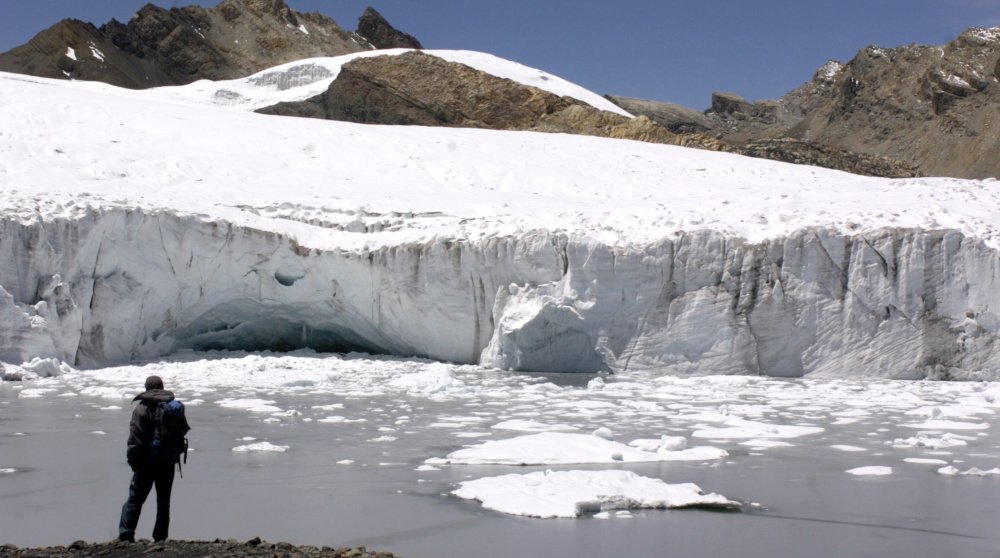Millions of people across the United States were delighted to witness either a full or partial solar eclipse last month. Given that the moon, being new, was invisible until the moment the eclipse began, it’s a wonder how the timing and path of the total eclipse was predicted so precisely.
Since Babylonian time astronomers and scientists have been taking measurements of the precise movements of the sun, the Earth and the moon, and making predictions. The state of eclipse science now is so good that timing can be predicted to the nearest second and location to less than a mile.
So why is it that the equally remarkable science of climate is dismissed by so many?
Climate science is principally concerned with subtle changes: the global climate changes that took our planet through the last million years of ice ages, daily changes in the weather, and finally the global warming change that people are talking about today.
In the 1920s a Serbian astronomer and mathematician, Milutin Milankovitch, demonstrated that the glacial cycles of the last million years could be explained by slight changes in Earth’s rotation around the sun, not by changes in the total amount of solar energy reaching Earth.
In 1895, a Swedish scientist, Svante Arrhenius, demonstrated that variations in concentrations of atmospheric carbon dioxide could influence Earth’s heat budget. He is generally recognized as the originator of what we now call “the greenhouse effect” of increasing carbon dioxide (and other trace gases) in Earth’s atmosphere.
Increases have been due in large measure to the burning of fossil fuels — coal, oil and natural gas — and various agricultural practices. All have been useful to us in the development of human civilization as we know it today.
The prediction of climate change is considerably more complex than the prediction of eclipses. Take for example the fact that oceans absorb 93 percent of the excess heat and about half the excess carbon dioxide associated with the greenhouse effect. Oceans act like an enormous flywheel, taking forever to get going and hard to slow.
Also, when Arctic sea ice melts it exposes a dark ocean, which will greatly increase the amount of the sun’s heat absorbed when it has gone. On the other hand, volcanic eruptions and air pollution tend to cool the atmosphere temporarily.
It only took a few dozen astronomers and mathematicians to predict eclipses accurately. Thousands more scientists study climate interactions. The great majority of them agree that mankind’s actions are the principal cause of global warming. They also note that the speed of warming that Earth is now experiencing is about 100 times faster than at the end of the last ice age.
So what can be done? James Hansen, the climate scientist who brought these issues to the attention of Congress in the 1980s, says that we need to both drastically reduce carbon dioxide emissions and find a way to remove carbon dioxide from the atmosphere and oceans. Both are major challenges for society and science.
As a first step it will be important to pay for carbon dioxide emissions, which are, after all, a waste product. We already pay for other wastes we dispose of. The most efficient proposal to date is to price all fossil fuels at their source, at the coal mine or the oil or gas well, or port of entry, then raise the price steadily such that it matches the environmental harm that the wastes are already inflicting. All the money raised should go back in equal shares to every citizen. The result will be a challenge to industry to innovate in ways that put clean energy sources to work efficiently, so that such goods are competitive in the marketplace.
This concept is gaining traction in Congress, so please contact and urge support from Sens. Susan Collins and Angus King and Reps. Chellie Pingree and Bruce Poliquin. They have the responsibility to put such a plan into action.
Our air will get cleaner, our health will benefit, and our children and grandchildren will be able to experience the natural environment as we did when we were young. Wouldn’t it be nice to have a climate that is as predictable as the next solar eclipse?
Peter Garrett, Ph.D., is a member of the Citizens Climate Lobby and the Sustain Mid-Maine Coalition. He lives in Winslow.
Copy the Story LinkSend questions/comments to the editors.



Success. Please wait for the page to reload. If the page does not reload within 5 seconds, please refresh the page.
Enter your email and password to access comments.
Hi, to comment on stories you must . This profile is in addition to your subscription and website login.
Already have a commenting profile? .
Invalid username/password.
Please check your email to confirm and complete your registration.
Only subscribers are eligible to post comments. Please subscribe or login first for digital access. Here’s why.
Use the form below to reset your password. When you've submitted your account email, we will send an email with a reset code.